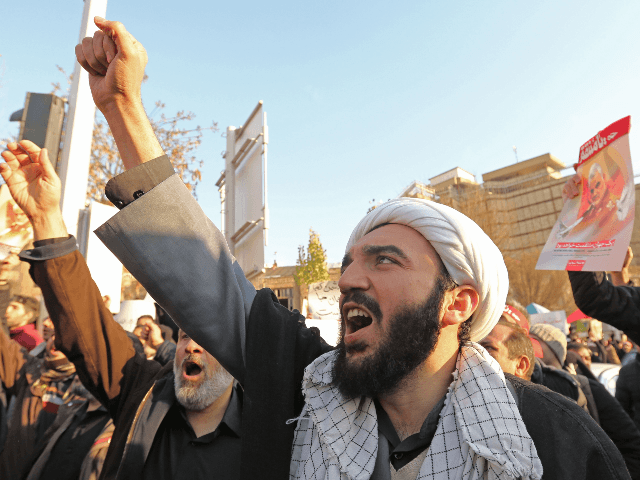The Iranian regime once again blocked Internet access on Monday in an effort to control mass protests after the ayatollah’s troops shot down a civilian airliner and attempted to cover up the crime.
President Donald Trump goaded Tehran for its habit of shutting down the Internet during popular uprisings in the same Sunday tweet where he told them, “DO NOT KILL YOUR PROTESTERS”:
According to analysts at the Foundation for the Defense of Democracies, the Farsi language version of President Trump’s message of support for the Iranian people on Saturday became the “most-liked Persian tweet in the history of Twitter,” which might help explain the regime’s eagerness to intensify Internet shutdowns.
Outside monitors on Monday confirmed Internet outages at universities where students are demonstrating against the shootdown of Ukraine International Airlines Flight PS752. Widespread rolling outages have been observed coinciding with big demonstrations and mobile Internet has been almost completely shut down in some areas. As of Monday, Internet disruptions do not seem to be as widespread as they were at the height of protests in November that were triggered by an increase in gasoline prices.
Users of Instagram, one of the few outside social media platforms permitted in Iran, have been reporting widespread account blocks and deletion of posts ever since the U.S. killed Islamic Revolutionary Guard Corps (IRGC) Gen. Qasem Soleimani, but this censorship appears to be coming from Instagram itself, and has affected both pro- and anti-regime accounts. Representatives of the Iranian government have accused Instagram of suppressing “democracy” by silencing regime loyalists who wish to protest the “assassination” of Soleimani.
Some Iranian social media users joined Trump in taunting the regime to cut off Internet access and prove just how frightened of the protests it really is. “Cut the Internet! Send the IRGC and Basij forces against the people!” said one Twitter user. The Basij is a notoriously violent paramilitary force often used by the IRGC to suppress demonstrations.
Since 2006, Iran has been working on a heavily firewalled “intranet,” formally known as the National Information Network (NIN), that would allow the regime to almost completely sever access to the global Internet while keeping Iranian websites online. The Iranian regime’s stated goals for the NIN, as described by Voice of America News in May 2019, are to “protect Iran from cyberattacks and enable Iranians to access high-speed, low-cost and Islamic-friendly content through an intranet isolated from the rest of the online world.”
The NIN would give Iran the power to block Virtual Private Networks (VPNs), the connections used by tech-savvy Iranians to bypass their government’s censorship and access banned websites. The regime alternately threatens to speed up work on the NIN as a threat to the outside world, justifies it as a necessary defense against cyberattacks and foreign “propaganda,” and touts it as a digital protectionist measure that would create a sheltered Iranian cyber industry, reports assert.
Although Iranian officials claimed throughout 2019 that work on the NIN was nearly complete, some analysts believe the network has more problems than Tehran wants to admit. There have also been predictions that the damage to Iran’s economy, technological progress, and quality of life from switching to the NIN would be so great that it might trigger a full-blown revolution, although this would become less of a concern if the regime thinks the current protest movement threatens its survival anyway.
Iran’s last Internet blackout gave strong indications the regime is getting better at shutting down access and imposing bans that cannot easily be circumvented. Almost 95 percent of Internet traffic was blocked at the height of protests in November, but many internal Iranian websites were still accessible. Computer specialists in the outside world who have previously been able to bypass Iranian censorship were unable to do so, possibly because tougher U.S. sanctions and rising political tensions made it more difficult for Iranians to get their websites hosted by foreign companies.

COMMENTS
Please let us know if you're having issues with commenting.